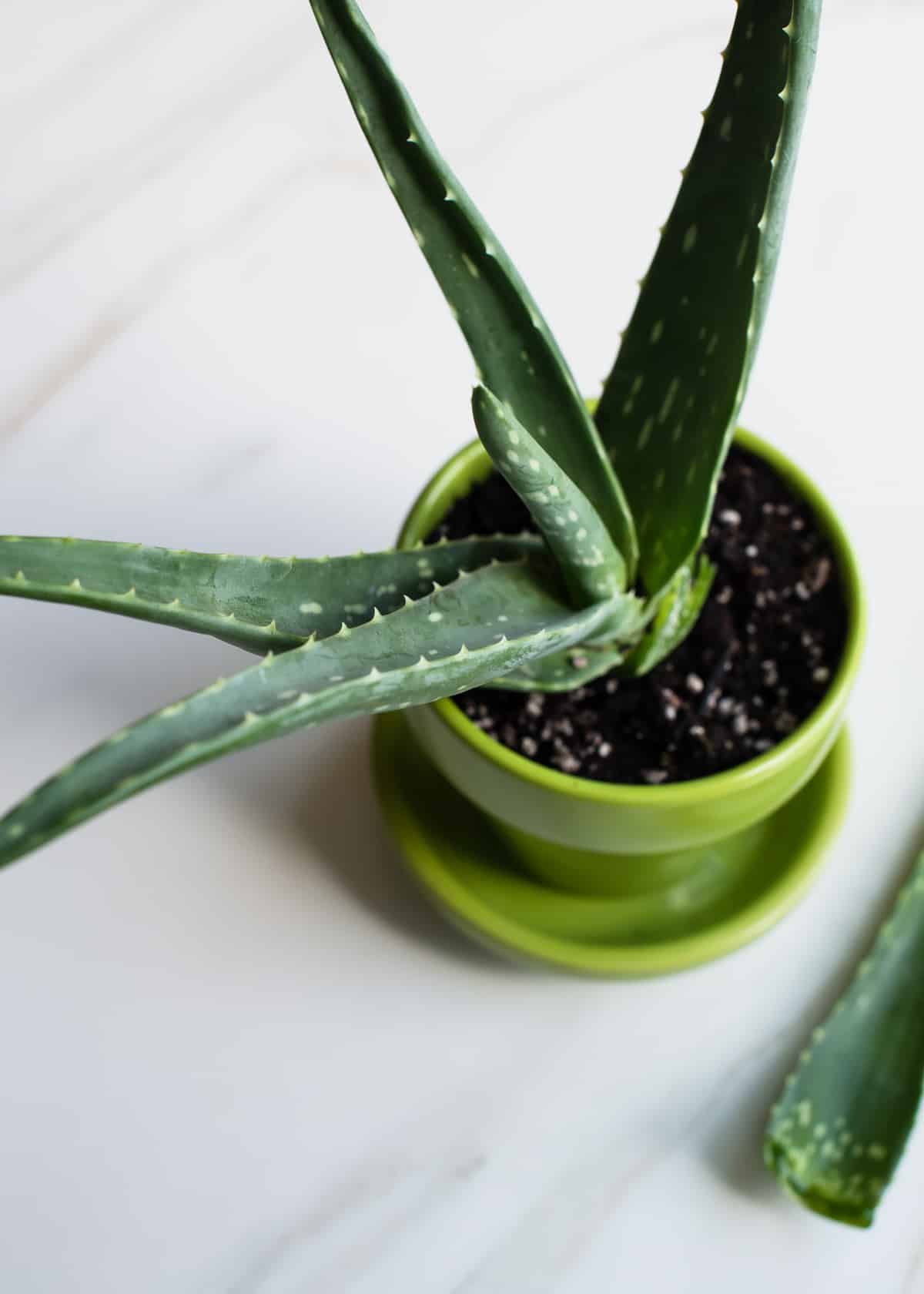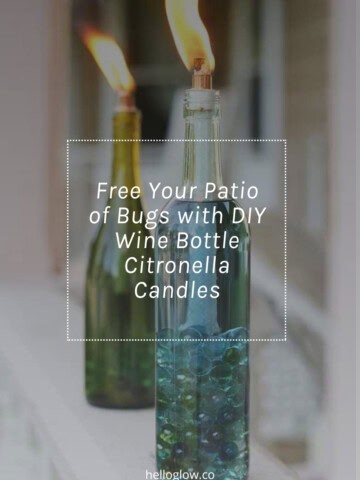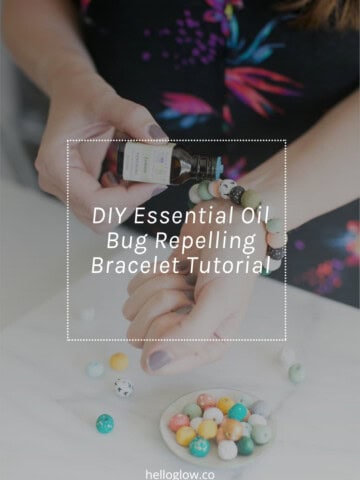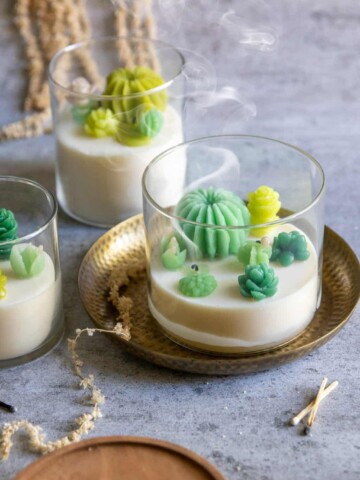A house doesn't really seem like a home until there are plants in it, right? (They're also great to have around because of their air-cleaning qualities.) But finding easy-to-grow plants that will stay alive can be difficult for those of us who are a little, well... challenged in this department.
Have you ever found yourself staring longingly at one of those interior design posts of an abundantly green, jungle-esque room and dreaming of one day having something similar of your very own? We may envision a bright space filled with healthy plants but have no idea how to care for them (or worse, mostly kill them).
As someone who used to grapple with the greenies myself but who now has an entire home filled with lush, leafy growth, let me tell you that it really can be yours! All you need is some direction toward the more hearty and resilient plants that can handle a wider range of treatment and some basic plant care know-how.
Here are 11 houseplants to invest in that are easy to grow and can withstand a little neglect while adding a nice pop of color to your home.

First, here are a few tips to get better luck with the plants you already have—and to keep your new ones lasting even longer.
For thriving and robust indoor plants:
Find the right location, and don't move them too often.
Research how much light your plant needs, find a place that works, and try to stick with it. Plants can often have a hard time adjusting to a new location.
Many greens will thrive best when placed in indirect sunlight or away from the window in a well-lit room. Keep your plants warm, and set them away from drafts, cold winter window sills, and hot radiators.
Watch your watering.
Most plant-care beginners tend to water too much, which causes the roots to rot. Wait until the soil has dried down at least an inch or two before the next watering. Make sure you’ve got the right soil for the plant (a quick google search). Clay pots with drain holes that allow for water to move through and evaporate are best.
Remove dead flowers or buds.
This is so new ones can grow in! Prune off dead flowers or buds, and trim back thin or leggy growth to the last healthy split to encourage thicker greenery and new flowers.
Watch out for pets and kids.
If they're determined enough, they'll find a way to knock over, chew on, or dig up a plant—which could kill it, ruin your floors, and of course, result in a medical emergency or stressful vet visit. Consult the ASPCA's toxicity guide before bringing any new plant home (including the ones in this post), as many are poisonous to cats and dogs. To be safe, keep all plants out of the reach of pets and little ones who are not old enough to know they're not for eating.
Use a big enough pot and plenty of soil.
Those cute little color-dipped pots you bought on Etsy are adorable, but your plants will start to die once their roots have outgrown them. Transfer them to a bigger pot, and save the smaller ones for storage or new baby plants.
Feed your plants when the weather gets warmer.
Feed your plants according to the directions on the bottle during the spring/summer months. Most tend to slow their growth and rest in the cooler fall and winter.
Here are our top picks for easy-peasy plants that will zoosh up your space from grim to green:
1. Spider plant
Spider plants don’t mind a little tough love, low light, or forgetful waterers. They look great set in a window, on the corner of a desk, or even hanging, as they love to drape and spread.
These spiky-looking plants will clean the carbon monoxide out of your home, and they live for decades in just about any conditions! You can easily transport cuttings from the mother plant into water or soil to grow a new plant, too.
2. Snake Plant
My former roommate had a snake plant for the entire 5 years we lived together. It grew and grew, even though she didn't do anything beyond water it every few weeks. And she never had any problems with it, despite keeping it in low light and my cat occasionally taking a nibble.
Also known as Sansevieria, these tall and spindly members of the succulent family are enjoying quite the social media moment. They are hearty and can handle very low light, so if you have a dark corner, bathroom, or hallway in need of some green, this is a great choice.
Since they grow upright rather than drape or spread, they also work well in tighter spaces. Just make sure the soil can drain and dry fully between waterings.
3. Palm
These plants are my personal favorite, as they seem to transform any space into a tropical paradise—and they are so forgiving! They can survive in low light conditions and will often grow to 6 feet or more. I managed to keep one alive as a busy university student with a sink permanently full of dirty dishes.
Palms do like the sun, and they don’t mind drying down before being watered (once they are dry down to 2 inches, it means they can be watered). Watch for yellowing fronds, green fronds dropping, sour soil smells, or a softening trunk for signs of overwatering.
Healthy palms will have firm trunks, dark green fronds, and a slow brown drying/dying off of the bottom row as they grow. Try yucca, ponytail palms, or a sago palm.
4. Aloe
Aloe plants not only look great and are nearly impossible to kill, but they can be used for a wide assortment of home remedies and skincare DIYs. (Hot tip: aloe gel is amazing when used on sunburns!)
Because aloe is a succulent, you’ll want well-draining soil and a hands-off approach. Like the snake plants and palms, they like some light, but indirect is best.
You can harvest the leaves and use the juice for drinks or recipes.
5. Philodendron
This hardy plant is the all-star of the indoor plant world. If you were to conjure up an image of the prototypical “house plant," it’s quite possible that the philodendron would come to mind.
Known for its heart-shaped leaves, it adapts to low light and cascades prettily over shelves and other surfaces. This is a nice plant to set up on shelves, mantles, desks, or window sills—especially because you’ll want to keep it out of reach from children and pets. Its leaves are toxic when eaten.
6. Mint
If you're looking for a kitchen windowsill herb, mint is one of the easiest and hardiest to grow. But take note: one of the earliest gardening warnings I remember getting from my father, an avid gardener and botanist, is “make sure you only grow mint in pots!”
If ever an herb thought it was a weed, it’s mint. It will grow, it will spread, and it will take over if you let it.
The good news is it will thrive, easy as pie. You'll be making plenty of mojitos with this bright, versatile herb—and you might actually find yourself with too much! In that case, add some to freezer pesto, infuse water—or some vodka or bourbon—with it, make a minty body scrub, whip up a smoothie, or dry the herbs to display.
7. Ivy
Ivy is such a great choice if you’re looking for a plant to cover a lot of territory. I personally love the wild spread of their tendrils and the delicate lace-like quality they lend around windows and frames.
As they grow, you can easily propagate them by pinching off new growth and transplanting the cuttings into new soil. So if your friend has an ivy plant, ask for a small stem of theirs, and then remove the bottom leaves and plant it in moist soil.
Set a few of them together for that English garden indoors feel. Gently tuck its leaves around the places you’d like it to climb, and it will oblige.
8. Boston fern
A great choice for more humid spaces, Boston ferns will add a burst of frilly, fuss-free greenery to any space in need of enlivening. They like indirect sunlight and moist soil, but you need to watch out for overwatering.
9. Cast-iron plant
One of the most resilient plants on our list, the cast-iron plant is a simple, no-fuss, dark green plant with large, waxy leaves. These are nearly indestructible, and their growth is slow and steady, so make sure you buy them at the size you want.
Since this plant is so understated, it works well in tandem with the showstoppers. It can handle negligent feeders, cooler temperatures, forgetful waterers, and darker spaces. What’s not to love?
10. Dracaena
Similar to the palm, this plant is an upright house plant with a tropical vibe. The spiky leaves look almost like large blades of grass! Some have beautiful yellow and green variegated leaves, which add some nice variety to your collection.
Care for them like you do your palms—I've had good luck with them in all light levels in my house. Wait for a few inches of dry down before watering, set in indirect sunlight, use well-draining soil, and you’re all set. They are poisonous to dogs and cats, so don't buy this one if you have pets.
11. Succulents
The shiny green leaves of succulents like the jade plant are a fun addition to a neutral-colored or minimalist room. Cacti are available in many different colors and shapes. While these are technically in a category of plants with water-retaining leaves and used to desert conditions, succulents—think jade, cacti, aeonium, agave, crassula, and aloe—are wonderfully beautiful and effortless plants to grow.
Use our rule of thumb of 2 inches of dry soil before watering, find grainy high-drainage soil, and make sure the water is able to drain completely. It’s even a good idea to raise the clay pot up on a few small stones, so it sits just above any water in its tray. They're the perfect plants if you frequently forget to water or aren't home much.
They can handle direct sunlight where many other plants can’t, so they make a great choice for south-facing windows. Most are also easy to propagate (simply pinch off a little branch or even a leaf, and set it in new soil), and one happy succulent can easily turn into many more.
Ready to try your hand at making your own home jungle? Here's where you can start:
[show_shopthepost_widget id="2890066"]
910




